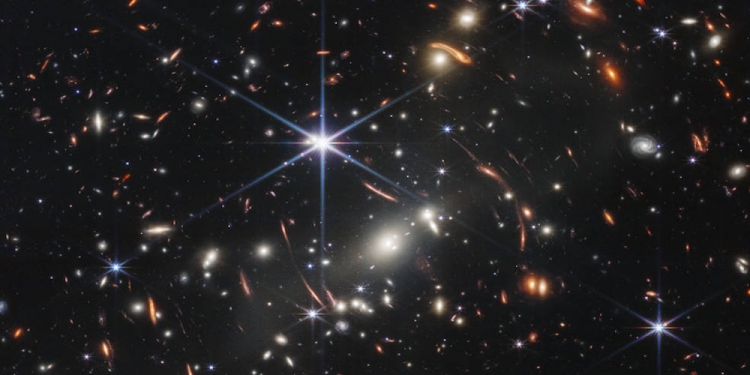NASA reveals “the deepest, sharpest infrared view of the universe to date”, using the James Webb Space Telescope. The image itself is officially known as Webb’s First Deep Field, and it’s a very beautiful image. But why is this picture such a huge deal for space science?
It's here–the deepest, sharpest infrared view of the universe to date: Webb's First Deep Field.
— NASA (@NASA) July 11, 2022
Previewed by @POTUS on July 11, it shows galaxies once invisible to us. The full set of @NASAWebb's first full-color images & data will be revealed July 12: https://t.co/63zxpNDi4I pic.twitter.com/zAr7YoFZ8C
According to NASA, the image is of the galaxy cluster SMACS 0723. You’re now able to see—for the first time—thousands of galaxies, including the faintest objects ever observed in the infrared. Even more incredible is how tiny it is compared to the rest of the universe. It really makes you think about how small we really are.
“This slice of the vast universe covers a patch of sky approximately the size of a grain of sand held at arm’s length by someone on the ground,” said NASA.
These galaxies you see in the image are also among the oldest in the universe. According to Bill Nelson, administrator of Nasa, the image showed the “light of galaxies bending around other galaxies, traveling for billions of years before reaching the telescope”. He added that more images will be released that would reach back to about 13.5 billion years—close to the estimated start point of the universe itself.
US President Joe Biden, who unveiled the image first at a White House event, called the moment “historic” and said it provided “a new window into the history of our universe”.
“It’s hard to even fathom,” said Biden.
HUBBLE vs JWST: Here's the difference. Welcome to a new era of astronomy. pic.twitter.com/ATIOhc2mnQ
— Ian Lauer Astro (@ianlauerastro) July 11, 2022
The USD 10 billion James Webb Space Telescope, three decades in the making, was launched last year. It was created to look inside the atmospheres of exoplanets and observe some of the oldest galaxies in the universe by using a system of lenses, filters, and prisms to detect signals in the infrared spectrum, which is invisible to the human eye. It is described as the most powerful telescope ever to be sent into space—a stark difference to the Hubble Space telescope.
The rocket used to launch the James Webb Space Telescope was Ariane 5, a European heavy-lift space launch vehicle that’s capable of carrying more than 10 metric tons to geostationary transfer orbit. The same rocket was also used to launch the new MEASAT-3d satellite, which Alex covered on location.
Comparison of Hubble and Webb images of galaxy cluster SMACS 0723. pic.twitter.com/oqWseqA8f9
— llm al gaib (@tinfoil_globe) July 11, 2022
NASA says that they will release the full set of Webb’s first full-color images and spectroscopic data during a televised broadcast beginning at 10:30 a.m. EDT (10:30 p.m. Malaysia time) today, 12 July. You can learn more information on where to watch here.
[ SOURCE ]








